Anchoring is as frequent operation on board as loading and unloading a cargo.
But in spite of being a frequent operation, the number of incidents related to anchoring never seem to reduce.
That is when many minor incidents never come to light to a wider audience.
The truth is that even after being a routine operation, effective way of anchoring is not a child’s play.
Sure one can just somehow arrive at anchoring position and open the brake to anchor a ship. I am sure you would agree that it is not an effective way of anchoring. Don’t you think so?
In this post, let us discuss a practical way of anchoring.
But before we do that, we need to discuss two things. First how an anchor holds the ship. And second what guarantees more holding power of anchor.
1. How an anchor holds the ship
When an anchor is dropped, The crown of the anchor is the first to hit the sea bottom. As the ship moves back, the flukes take its position and embed itself into the seabed.
It does not matter from what height the anchor is dropped, the crown will alway hit the bottom first. The flukes will only dig into the seabed once the ship moves aft and flukes are facing downwards into the sea bottom.
As the ship moves back, the fluke takes its position and embed itself into the seabed.
The opposite happens when we pick up the anchor. When the chain is all picked up, the flukes face upwards and gets uprooted from the bottom.
2. Holding Power of anchors
All other factors being common, there are three things that affect holding power of anchors. First is the construction of anchor, second nature of seabed and third the scope of the cable.
Holding power due to anchor construction
A ship’s Equipment number decides the weight of the anchor and length of the chain.
The fluke area determines the holding power of the anchor. International Association of Classification Societies (IACS) governs the rules for anchors.
IACS enlist three types of anchors.
- Normal holding power anchors,
- high holding power anchors
- Super high holding power anchors.
Because of the high and super high holding powers, these anchors can have a lesser weight than the normal anchors. This is because the high holding design (Larger fluke area) compensate for the loss of holding power due to lesser weight.
This is because the high holding design (Larger fluke area) compensate for the loss of holding power due to lesser weight.
Even though anchor weight has nothing to do with holding power per se, it contributes to some extent in holding a ship in its position.
More weight of the anchor would need more force to push the ship from its position. For this reason, anchor weight is more often used as a function of holding power.
Holding power due to nature of Seabed
Another factor that affects the holding power of the anchors is nature of seabed.
Sand is considered to be the strongest holding ground. Soft mud is the least holding ground. This is because of obvious reasons.
Anchor embedded into soft mud would leave the bottom easily compared to the more harder surface like sand. Mariners must consider nature of seabed to determine the possibility of dragging of the anchor.
Holding power due to scope of the anchor cable
The correct scope is essential for safe anchoring and better holding of the anchor. The scope is the ratio of the depth of the water to the length of the cable deployed.
More the scope, better an anchor will hold the ship. The idea of having more scope is that the angle of chain with respect to sea bottom should be minimum.
More the angle, lesser the holding power. OCIMF has published a graphical relation between this angle and holding power of anchor.
As a thumb rule, Scope of 6 is advisable for anchoring. That is when anchoring into a depth of 20 meters, we should pay at least 120 meters of cable. When anchoring in areas of strong wind or current, we should have a scope of more than 6, up to 10 sometimes.
There are two situations where the scope of 6 or more may not be always possible.
- In congested anchorages like in Singapore and
- in deep water anchorages like Fujairah.
In congested anchorages, this is due to insufficient sea room and In deep water anchorage due to insufficient cable length. In calm weather, the lesser scope in these areas should not be a problem.
But if you expect wind force to increase, increased possibility of anchor dragging should be part of the risk assessment.
Now that we have discussed few of aspects of anchoring, Let’sLets anchor a ship.
3. Preparing for Anchoring
Preparing the vessel for anchoring can start days before arrival. This is when a Master checks the charts for marked anchorage areas days before arrival.
Anchorage area for the vessel could also be suggested in the agent’s pre-arrival message. In any case, the Anchorage area must be physically checked in the chart to ensure that
- it is designated for the type of ship,
- the depths complies with the UKC requirement of the company
- depths are less than the maximum depth ship can anchor
- is clear of any cables, pipeline, wrecks or other obstructions. and
- the nature of seabed is appropriate for anchoring
When checking the charts for underwater obstructions, attention should be paid to the chart symbol ‘#’.
This symbol means there is a foul ground and shall be avoided for anchoring. I am particularly mentioning this chart symbol because you may not miss a wreck but it is easier to miss this.
It is important to be aware of the ship’s windlass lifting capacity. In any case, most of the ship’s windlass are able to lift the weight of the anchor and about 3 shackles.
Vessels could easily anchor in depths of about 80 meters. If anchoring in depths more than that, you might need to first check the windlass capacity for the particular ship.
4. Anchor stations
Anchor stations should be ready forward well in advance. The anchor party should make the inspection of the anchor windlass.
They should also ensure that the drive (Hydraulic power packs or electric power) is running. The lashing of both the anchors should be removed even if it is pre-decided about which anchor will be used.
It is a good practice to brief anchor party well in advance of some information about anchoring such as
- the depth of water at the anchoring position
- Which anchor to use
- Anchoring method (Let go or walk back)
- the number of shackles the vessel will be brought up to.
5. Approaching the anchorage position
The most critical factor while approaching anchoring position is the speed of the vessel. Engines must be ready and tested well in advance and the speed of the vessel should be under control.
If Master feels the ship’s speed is much more than what it should be, he should exercise zig-zag maneuver to reduce the speed.
Zig-zag maneuver (also called rudder cycling) is the most effective way to reduce the ship’s speed over a shorter distance. While doing rudder cycling,
While doing rudder cycling, the master must give due consideration to the nearby ships and not run over other ships in the vicinity.
Apart from speed, the direction from which to approach the anchoring position is important. The best approach heading is of heading into the wind and tide. The heading of similar sized anchored vessels can give
The best approach heading is of heading into the wind and tide. The heading of similar sized anchored vessels can give a quite accurate sense of the approach heading. If the traffic density, water
If the traffic density, water depth, and sea room permits, it is better to bring the vessel to this heading at least 1 mile from the anchoring position.
Once on this heading, engine movements should ensure that vessel’s speed is less than 2 knots about half a mile from the anchoring position.
These are just referencing but useful figures. You should consider vessel’s maneuvering characteristics, such as stopping distances to amend these figures. Once the vessel is around
Once the vessel is around half a mile from the anchoring position, we can give stern movement. This is to ensure that vessel is completely stopped at the anchoring position and there is no headway in the forward direction.
During Stern movement, the vessel would cant to starboard side (for right hand fixed pitch propellers).
If we are using the port anchor, this is good as this would ensure the cable is clear of the vessel and will not lead across the bow.
But if starboard anchor is used, there is a chance of anchor chain going under the bow or crossing the bow. In this case, before we give stern movement, vessel’s rudder is put to hard port to get some port swing.
The stern movement would check the port swing and the cable going under the bow can be avoided.
Make sure to bring the rudder to midship during Stern movement. Apart from lateral swing, stern movement of the vessel itself ensures that the cable is clear of vessel’s hull.
However, in all cases, we must ensure that movement of the vessel does not put excessive strain on the windlass. We will discuss this in the next section.
6. Anchoring Methods
As we know, there are two ways an anchor can be dropped to the seabed.
- By letting go
- by walking back.
Each of these ways has its advantages. And in most of the cases, it is up to the discretion of master how he wants to anchor.
But there are certain conditions in which there are no options but to choose a particular method.
Letting go an anchor
Would you agree that anchoring by letting go is easier of the two methods? It is the most used method of anchoring too.
In this method, we open the windlass brake to let the anchor go under gravity.
Before opening the brake, we must consider the height from which we plan to drop the anchor.
If we don’t, we may damage the anchor. Depending upon the height, the damage may not be visible in the same operation but will be visible in the longer run.
There is another obvious risk of dropping the anchor from a height. The anchor under its weight will continue to gain momentum until it touches bottom. This momentum will increase
The anchor under its weight will continue to gain momentum until it touches bottom. This momentum will increase
More the height, more momentum the anchor will gain. This momentum may increase to a point where windlass break would not be able to hold it.
The anchor’s momentum will only stop when the anchor along with entire chain is in the bottom after it has been uprooted from the bitter end.
Watch this.
What is the referencing height then?
As a thumb rule, you should never allow the anchor to drop from a height of 20 meters. That is, one must lower anchor to a level when the distance between the bottom and the anchor is not more than 20 meters.
But that is a maximum figure. One must lower the anchor to as close to the bottom as possible before it is let go.
But if you aim for lowering the anchor to say one meter above the seabed, you may end up touching the anchor to seabed while the ship still has some speed.
That is not good.
So here is another rule of thumb. We should aim for lowering the anchor to around half shackle from the bottom before we let go.
To summarize, here is how we should anchor the ship by letting go
- Approach the anchor position heading into wind and tide with speed around 2 knots at 0.5NM from the position.
- Lower the anchor with gear to around half shackle off the bottom and then hold the anchor on brake
- Give Stern movement to stop the vessel over the ground once the vessel is in the anchoring position. if using starboard anchor, check the starboard swing (for Right hand fixed pitch propellers) because of Stern movement.
- When in position, drop the anchor by opening the brake
- maintain around 0.5 knots stern speed to allow the cable not to pile up.
- Hold the break once required cable length is paid out.
Anchoring by walking back
Walking back means lowering the anchor with gear.
The principle difference between walk back and let go methods is that in the walk back we lower the anchor under power.
The advantage of this method is that cable would not run on its own. So there is no risk of damaging the anchor or windlass by dropping from a height.
But there is another risk involved with this method. I earlier said that in the “let go” method we should maintain around 0.5 knots astern speed while we are paying the anchor chain.
But even if we exceed this speed to 1.0 knots, only the anchor will pay off. There will not be any load on the windlass. Even when the brake is on, and the chain stresses, windlass brake will be the first thing to render.
But that is not the case with walk back method. In walk back method, since we are lowering the anchor with windlass in gear, excessive speed would surely damage the windlass.
We must not exceed the stern speed to more than the design speed of the windlass.
Typically the design speed of windlass is 9 meters/minute. That is 540 meters/hour (0.3 knots). So we must not exceed the stern speed to more than 0.3 knots while walking back the anchor.
7. Anchor brought up
Once we have lowered the required anchor length, and we have disengaged the gear (in the case of the walk back), we then wait for the anchor to be brought up.
The anchor is brought up when it leads to the long stay and then gradually comes back to short to medium stay.
Once brought up, there is an important thing that we need to do. Put the bar (Bow stopper) on and rest the anchor chain on it.
This is because the load generated by the vessel’s movement during its stay at anchor should be borne by the bow stopper which has higher capacity than the windlass system.
There is a disadvantage though. In heavy weather, there are chances that stopper may jam or deform. In this case, if for some reason vessel needs to let go the cable in the emergency, it would be difficult.
The only solution to it is that the Master must get underway before putting any component of anchoring at the risk of damage. Most of the companies have instructions to the masters to leave the anchorage if wind force is more than force 6. There have been
Most of the companies have instructions to the masters to leave the anchorage if wind force is more than force 6. There have been
There have been incidents of total constructive loss due to master’s decision to stay at Anchorage in spite of adverse weather warnings.
Conclusion
Anchoring is a routine job. Number of incidents during anchoring or while at anchor suggest that we might not have yet mastered the art of anchoring a ship effectively.
Knowing the correct anchoring procedures and their limitations are one of the best ways to avoid anchoring related fatalities and damages.
Share this:

About Capt Rajeev Jassal
Capt. Rajeev Jassal has sailed for over 24 years mainly on crude oil, product and chemical tankers. He holds MBA in shipping & Logistics degree from London. He has done extensive research on quantitatively measuring Safety culture onboard and safety climate ashore which he believes is the most important element for safer shipping.
Search Blog
99 Comments


I also believe that the weight should be on the chain stopper as it is designed to withstand much more than brakes. (Chain Stopper (Guillotine) = 80pct of Chain MBL Brake band = 45pct of Chain MBL). Plus I have witnessed, leaving a gap results in a high probability of deformation in the chain stopper as the slip distance is much higher (greater momentum) as compared to the cable snugly resting against the stopper in case the cable runs out under excessive load. The same is also recommended method for securing the cable, in the concerned publication.

That is a good point made there. While the OCIMF publication recommend having the chain rest on the stopper it does not however say that other way is incorrect. It compares and contrasts between two methods. But as I said I also prefers it to be resting on the chain stopper. Thanks for giving your valuable views on this.

Hi This is very good reading the only information on anchoring missing is which is best anchor to drop? Does it matter if either Port anchor or Starboard anchor is dropped taking into account strong (ish) shifting winds and tides, I would of thought the only reason for 2 anchors is to have a spare incase the first one was lost to the seabed etc, or is there another reason (or benefit) for having both Port and Starboard anchors? I'm sure it will be a rule for ships over a certain tonnage or size to have 2 anchors for safety reasons, I'm just curious of the benefits in bad weather (if there is any)

Hi Bob. In normal conditions It does not actually matters which anchor we use as finally vessel will be stemming the the resultant of all the forces (Current, wind, tide). In case of anchoring in a river closer to the shore (like in Mississippi) , we normally use off-shore anchor so that it can hold the ship from dragging into the shore..But we normally use anchors on alternate basis so that we are sure that both can be used when required. Regarding 2 anchors, Yes it is class requirement to have 2 anchors. Apart from having other anchor in case one cannot be used, we sometimes have to use both the anchors specially in river where we cannot allow the ship to turn because of less space or strong currents. We also use for turning the ship where tugs are not available and for that we may require anchor on a particular side. We also use anchor for mooring in the river ports so that while casting off the ship, it is easier to bring the ship off the berth which otherwise may be difficult because of current pushing the vessel onshore. There are plenty reasons to have one anchor on each side.

Dear Sir, I find information in your blogs very useful and very informative and to the point. However regarding anchoring procedure could you please elaborate on best anchoring time when we have some tidal range. for example if 0700 is LW and 1300 is HW and tidal range is 6 meter, what would be the best time to anchor and reason behind it.

Ashish, if you are looking for an objective answer to this, there is none. A ship can be anchored any time. If I had the privilege to choose the time I would choose just before the low water or just before the High water (Slack water time). The Tidal current would be minimum and I can handle the ship without any concern of strong current. Also the forces acting on the anchor while it is being brought up will be minimum. On the other hand if ship is going up river and need to drop anchor, it is easier as I can use the current to my advantage as with against current, I can always use the engine and not loose steering and still be able to maintain less ship speed. However I would avoid anchoring in time of strong tidal current if ship is bound down river as then I need to turn in the strong current.

Excellent

Thank you Captain Bari..

this what i was looking since long..thnx

Glad it could be some help to you Shishir..

A question about radar anchor function, I have always had a doubt about this. The radar antenna is situated over the bridge, so the reference is the bridge itself. We drop the anchor and when the total amount of cable is laid out we activate the function, so the bridge is making the swing circle... is it right ? otherwise if we activate the function at the very moment the anchor drops there is an error...wait for your comments...thank you

While calculating the turning circle of the ship at anchor, we take the length from the forecastle to the bridge into account. If we add this distance, it takes into account this error you are referring to.

exactly Sir, that's the point, the question is if you can input this data ( the lenght ) in the radar for this purpose.....thanks for your dedication...

Very useful blog...thanx capt

Thank you Capt Ali..

sir i have a doubt some in rough weather anchor will drop or not

Dear sir, I've been tasked with putting a brief together to come to anchor. The scenario is! I have been away for 5 weeks travelling from Pardip (India) and arriving into the outer anchorage at the Thames in London. I need to propose, plan and execute this please can I have advice. Thank you

Hi Adam, The anchoring part is detailed in this post. Arriving from a long voyage would add checking & testing the anchoring equipments well before arrival for anchorage.

Please could someone look at my question I posted 6 hours ago. Kindest regards

Let me know if there is any further question on this subject.

Thank you sir that's much appreciated. What I was really after was the full sequence of events leading upto this event happening, I need to put a proposal together and then execute the anchorage for my presentation. Would it be easier to email me info your time I'm very greatful for.

sir i have a doubt, in a condition when currents and winds are not from same direction which anchor should i prefer to drop

In practice, It does not really matter. We can use any anchor. Finally, the ship will adjust itself to the resultant of both the wind and the current.

I am teaching my class of students of the various anchoring methods - open moor, running moor, standing moor, Mediterranean moor and Baltic Moor. The thing is I have never met anyone or spoken to anyone that has ever carried out the Baltic Moor. Is this something you or any of your contemporaries have experience of or is it a leftover from a bygone era? In my own career I have experienced the Mediterranean moor and open moor, but none of the others. Thank you for your interesting blog

Same here Kelvin. I have never used Baltic Moor.

Capt Rajeev, Thanx for this blog. A week b4 my familiarization for my promotion I search for a blog regarding anchoring and I found yours. I read it over and over since yours was in detail. I was surprised when I went abroad for my familiarization because my answer to their anchoring problem (which i read and copied from yours) was exactly the slides they are using... And I cannot thank you enough... Pls continue to write blogs in our field because it is indeed a great help to us... Thanx. Capt. GNS

Thank you, Captain...

Recently during promotion interview to Master, a friend of mine was given a situation of anchoring a loaded VLCC, in Singapore anchorage while approaching from West. The current was setting at 3 kts, 330 degrees and wind experienced was force 4. What could have been the best approach heading and which side anchor would have been best to be used considering the above situation. Comments from experienced Captains would also be appreciated as i am having my interview and simulator test next month.

Head to the current. Ideally, you can use any anchor but in a very strong current, it is advisable to use two anchors. If I have to choose one anchor, I would choose the opposite of from where the wind is coming. If the wind of from the port side (when we head to the current), I would choose the starboard anchor so that the anchor does not allow the wind to turn the vessel and expose the ship's bow to the strong current.

Excellent post. Very detailed.

Thank you, Capt Patel...

Dear capt, A question about anchror operation to be fully automatic remote operation from bridge, I had a doubt about this function. Does it mean no seaman working on the fore mooring deck when automatic anchor operation from bridge ? does the anchor stopper need remote operation from bridge for meeting anchor fully automatic operation function? thanks.

I have never come across this but I guess this would be only on small ships or tugs. On bigger ships I don't think it would be safe to anchor without anyone forward.

Great article about anchoring a ship and it is very useful to know it. Thanks for your sharing and waiting for your new excellent articles.

Glad you found it useful Fengyuan...

There are different anchoring methods to suit different needs, and it is necessary to learn and know them before you do the anchoring work.

Excellent article Sir. Would there be a guideline between anchor weight/size and vessel DWT you could share? Obviously depends on anchor type.

It is based on the equipment number of the vessel. Classification societies calculate the equipment number for the vessel and the weight of the anchor, as well as the length of the chain, depends on that.

Excellent post, one correction, the Scope of the anchor cable is the ratio of the length of the cable to the depth. Its vice versa in the article.

Great article thanks very much for your all efforts

Glad you liked it Ercan...

What is normal or good practice for securing anchors for sea and/or bad weathers? Should it be coupled in or not? Does any guides sais about it?

Both ways have its advantages and disadvantages. OCIMF mooring equipment guidelines recommend any of these methods.

Very useful info. Sir. I have a ques? Suppose depth is 100 metre then what is the formula for putting shackles? And formula for making swinging and dragging cirle?

I have discussed the swinging circle on this blog. <a href="https://www.myseatime.com/blog/detail/dragging-anchor" rel="noopener" target="_blank" rel="nofollow">How to know if the anchor is dragging?</a>

very helpfull cap

Glad you found it helpful Bhavyadeep...

Sir can you please tell something about.. While in dry dock the company want you to lower the anchor and end to end the chain, what is the entire procedure? Thank you Sir

It is done with the help of shore crane. Ship staff needs to continue lowering the cable and someone from the drydock will signal when to stop lowering and resume lowering. Finally, the bitter end is released while the shore crane is holding the anchor chain.

Thank you so much sir.can u explain about boat note and different type of charterer

I would like to know what is the rule of thumb "clearance of anchor chain stopper from the anchor chain.

This has become the favorite learning site of mine. Presently I am doing my class II orals for chief mates and found this site is utmost important. Wish I could find all the answers to all my questions. Kindly add more topics. Best of luck sir..

Glad it is helping you. If you have any questions you can ask those on SEAQA section of the website.

Sir, The question is.how many shackled of 35 dapth

What is the typical scope of chain veered for a ship anchoring in 12 fathoms of water? The answer is 70 fathoms. Can you explain why?

Hello Sir, could you explain how to weight the anchor? What happen if the scope is 4/5, the boat is at the maximum distance and you try to weigh the anchor? Is the windlass able to move the ship towards the anchor ?

Dear sir, Your explanation was great,I have read navel architecture book so many times but still the concepts was not cleared fully , but yours way of explanation was excellent and clear up to point Thank you sir

Your method of anchoring explained is so simple really excellent so far none of the author explained in such a easy and practical way.

Dear sir, could you please explain how to couple up both windlass in case if you have anchored in deep waters say 100 meters which is usual in fujairah.

Hi captain! how long anchor chain to drop, how is calculation captain? Please!

1.5x Sq.Root of Depth will give number of shackles to drop.

This formula does not account for windage area, nor wind strength. A better formula can be found here: https://trimaran-san.de/die-kettenkurve-oder-wie-ein-mathematiker-ankert/ Admittedly, it is for much smaller boats, but the mathematics is the same. You just need to scale the parameters.

Can u also explain some thumb rules for Master,for picking up the pilot in congested waters such as singapore,and some thumb rules while navigating in congested waters such as cjk appeoach,

Good day for u Dear Master, Pls let me know for how to calulation for drop anchor ,how many shackle to pay out for ship going to before drop anchor ...

Sorry guys I need to know how the anchor directions is named by clock system like anchor direction is 11 clock and does it have any thing to do with the long and short stay.

sir thanks a lot for sharing so much of information. would you guide me on one question which has been asked recently in mmd i.e "how to secure anchor for a long voyage?" is it some thing about claws n all could explain it in a better way ?thank you

Hello Sir, As per Hazira port in India there is a very strong current.Sir pls explain how to approch during anchoring time and what is a suitable time for dropping and picking up anchor and why?

Very useful capt. Similar article u discussed during my btm training. Keep on sharing ur expertise

I'm wondering - what would the speed of anchor/chain when let go by opening brake ? In meters/second... BR AN

I what Know about anchor time?

I work hard, I insist, I will succeed

I work hard, I insist, I will succeed

Great ...very informative

Hello, I could not agree more. Anchoring is too often a safety hazard than it should be. I am not playing in your league at all, my vessel is a small sailing vessel, but the mathematics of anchoring is the same. I spent some Corona time now to update my work on this, which you can find here: https://trimaran-san.de/die-kettenkurve-oder-wie-ein-mathematiker-ankert/ It covers what I call static anchoring (wind only) and dynamic anchoring (including swell). Important result is that a fixed scope like 6:1 or so is almost always a bad idea. In shallow water it underestimates the required chain length, in deep water it overestimates it. Happy to work out a digest with parameters of a huge vessel like you guys have!

I have now created an app for iPhone/iPad/Android to work out the minimally required anchor chain length... albeit not for ships as huge as this one... https://trimaran-san.de/anchor-chain-calculator/

Information on safe anchoring procedures

Thanks alot for making it look intersting and simple too

sir can you give me 10 possible hazards for anchor party to consider prior commencing in anchoring operation?

Sir, i want to know clear idea about anchoring. What should do when i off windless break? Slowly or fast? When i off windless break it fall down its own weight and it is so fast. Is this speed harmful for anchor? If i fall down anchor with break slowly it will damage break of windless. Then what should do? Please sir reply in my email address. Thank you sir.

That's really nice post. I appreciate your skills. Thanks for sharing

Dear sir, Could you please explain for me how can i used SOG and COG during anchoring,I'm very confuse about that. As i know SOG during anchoring that purpose may we know vessel turning that correct or wrong ?? Thanks sir in avandce

Excellent post, it is very helpful for me because i am preparing myself for promotion interview. Most of my Captian is using the method where they let go 3 shackles to the water and hold, wait for it to be brought up and let go again to the planned length for example 6 shackles in the water. What can you say about this method Sir?

Dear sir thanks for this, its a big help for me as I am preparing for a promotion interview. Most of my Captain is using the method where they will let go 3 shackles in the water and hold on until it will be brought up or tight then let go the planned length for example 6 shackles in the water. What can you say about this method Sir?

Very informative thank you for that.

OMG this is awesome, very interesting article. I can imagine the energy and time you have invested on this powerful combination of words. Many articles I come across these days do not really dive this deep to make it clear to audience as you did. But believe me the way you interact is literally 100% perfect. I will instantly grab your rss feed to stay informed of any updates you make on your blog, as well take the advantage to tell those who have their biometric information registered under any

I want to use this opportunity to thank Dr Uzo for what he has done for me and for helping me to get my ex back with his love spell at first I thought it's not going to work until I have faith in it and it tells me that it's guarantee and truly I have seen it thanks aging papa I we advice you people who need love spell to contract Dr Uzo email druzospellcaster@gmail.com or Whats App +2348117952155

Life is always beautiful when you be with the true person you love. For almost a year my lover had broke up with me and I was lonely and sad luckily I was directed to a very kind and Great spell caster Dr Abolo who helped me to bring back my lover to me and today I am with him now and happy together and very grateful for what you have done for me Dr Abolo Message him here on his page https://www.facebook.com/Dr-Abolo-Powerful-Spell-Caster-103167255430841/

thanks alot of information

Gosh! My life entirely changed since I met Omigodo by chance on internet! All my dreams has been turning to real, it's unbelievable! My wife came back to me two months after and... she changed! She loves me again, like the first day! Thanx again for all, my friend, and I am glad to hear news from you soon! (omigodoshrine@hotmail.co.uk} you are great Dan Bright - AZ USA.

+1(901)878-9747 Buy covid-19 vaccination card online

Nice Blog.

This post is extremely radiant. I extremely like this post. It is outstanding amongst other posts that I’ve read in quite a while. Much obliged for this better than average post. I truly value it! best homeopathic doctor hyderabad

Dear sir This article is the most pritical and smart way for anchoring.glad i found this article which is very helpful for my new carerer as Master.thank u so much sir.

Dear sir, very informative topic. Excellently explained. Plz confirm if the scope is ratio of length of cable deployed to the depth of seabed.

How to decide which anchor to use - port or stba

Hi...actually vessel anchored in the Amazon where currents are abt 3 kts. Also other vessels are anchored close (0.5nm). We decided to turn the vessel around rather than passing between vessels. However the vessel was pushed more ahead due to 3 kts current...the vessel almost moved 0.75nm before it was turned completely (vsl in Ballast condition). So in a tight anchorage with strong currents & other vessels anchored close, what would be a best way to proceed.
Leave Comment
More things to do on myseatime

MySeaTime Blogs
Learn the difficult concepts of sailing described in a easy and story-telling way. These detailed and well researched articles provides value reading for all ranks.

Seafarers Question Answers
Ask or answer a question on this forum. Knowledge dies if it remains in our head. Share your knowledge by writing answers to the question

MySeaTime Podcast
This podcast on the maritime matters will provide value to the listeners. Short, crisp and full of value. Stay tuned for this section.

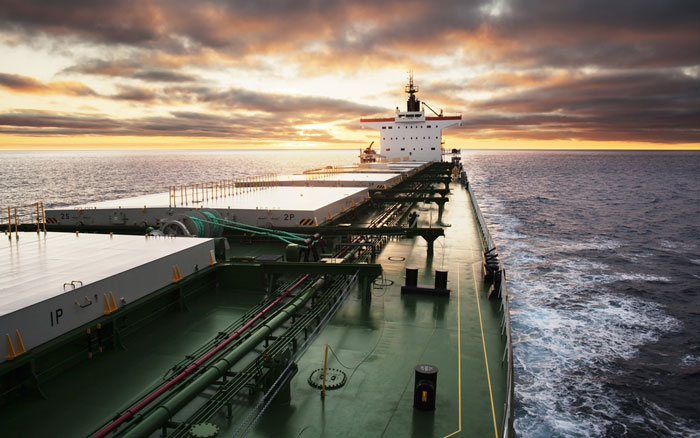
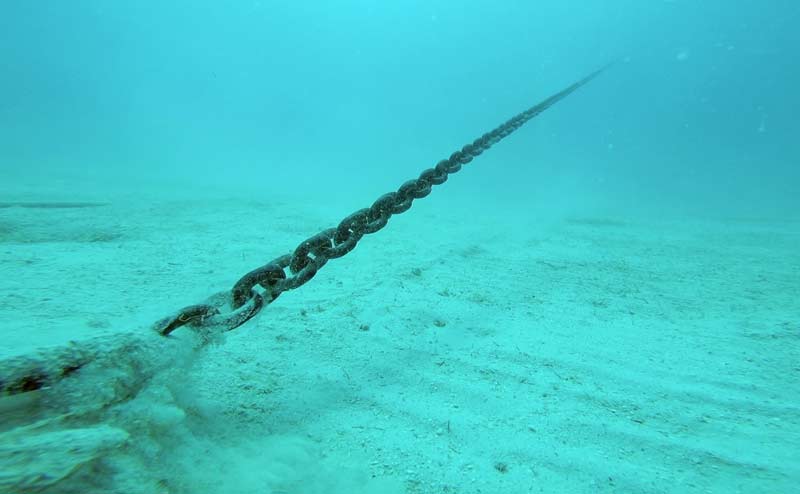
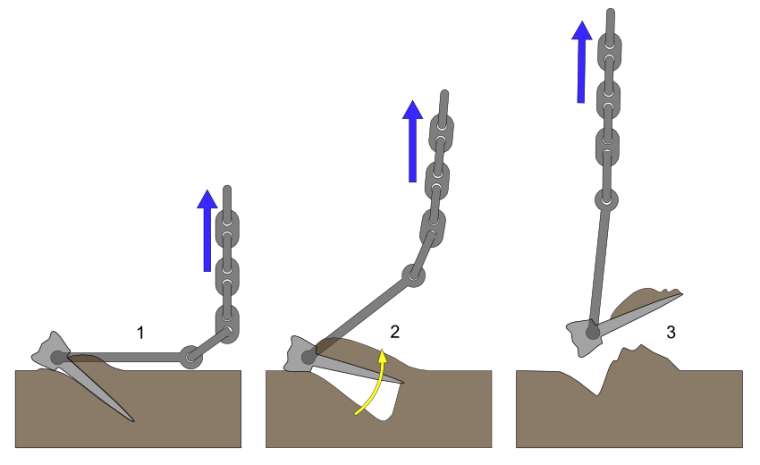

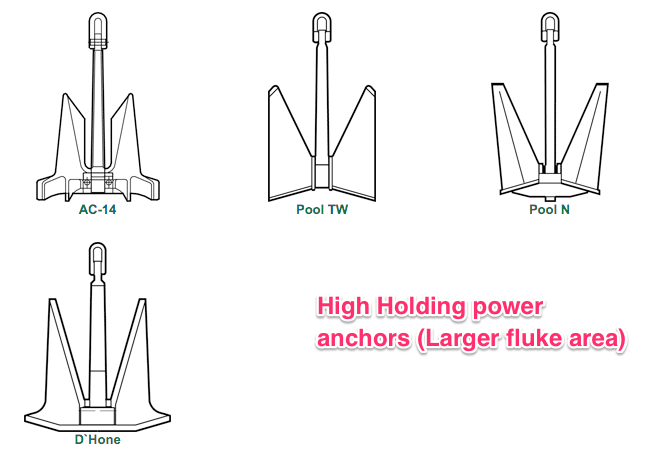

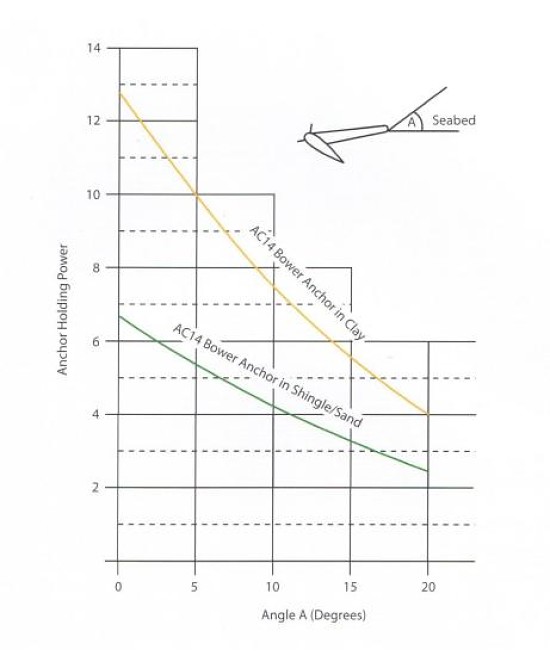
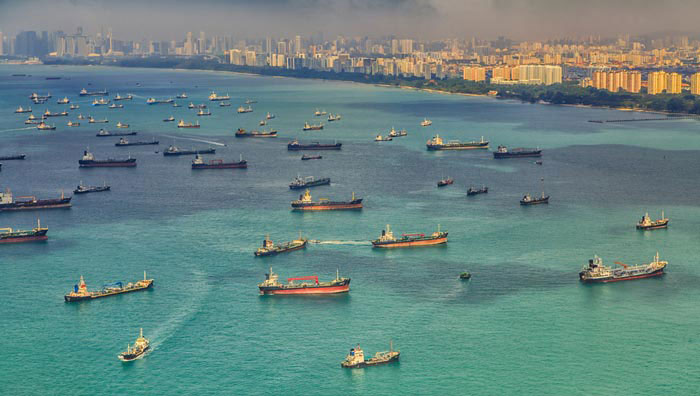
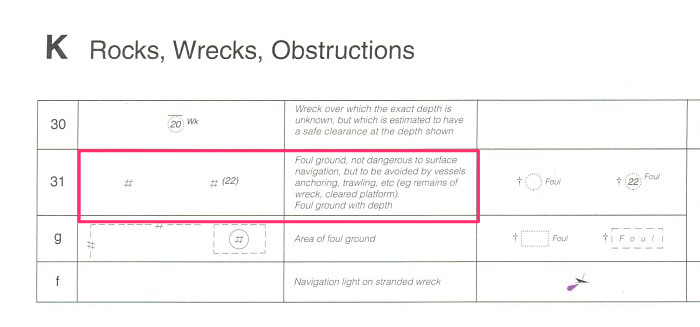
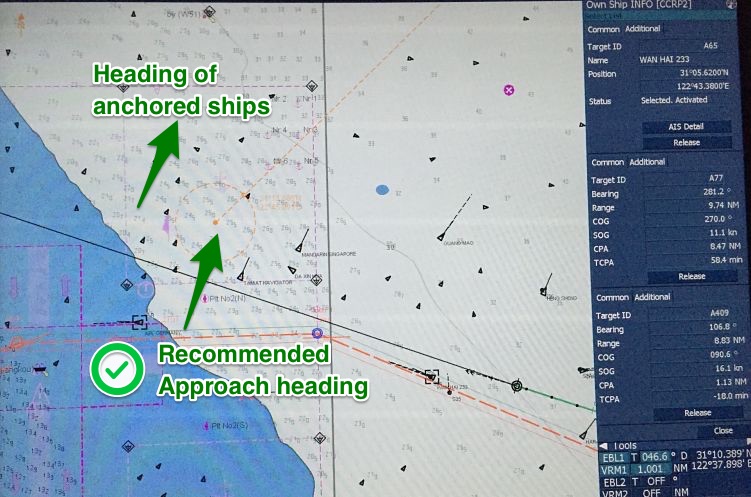
Dear sir, very very useful . thank u soo much. we need something about what is squat , squat calculation, how to calculate ukc available etc.
Glad you found it useful Karthick.. I will definitely right on squat as this is another important topic.
good day can you please send us your email address as well as contact details. Lastly the procedure of dropping anchors in any emergency in port